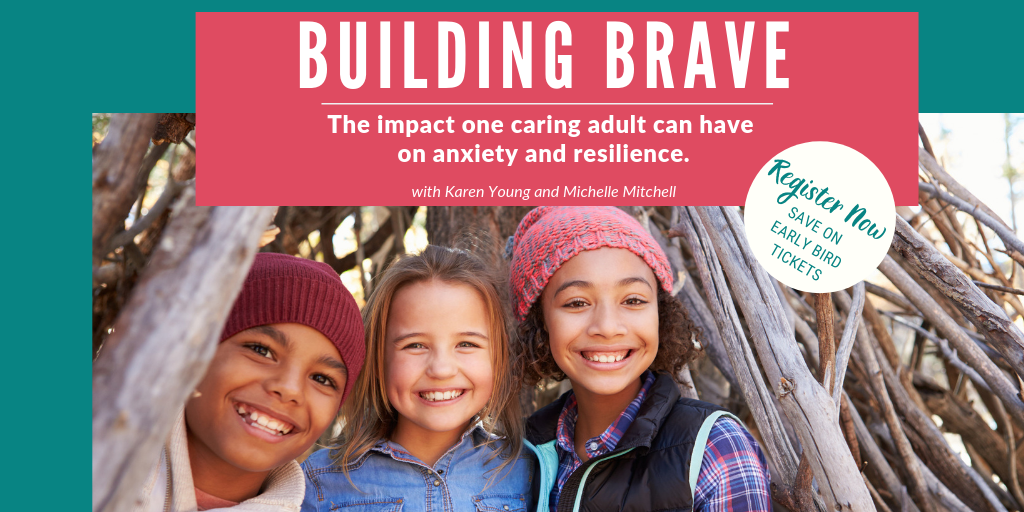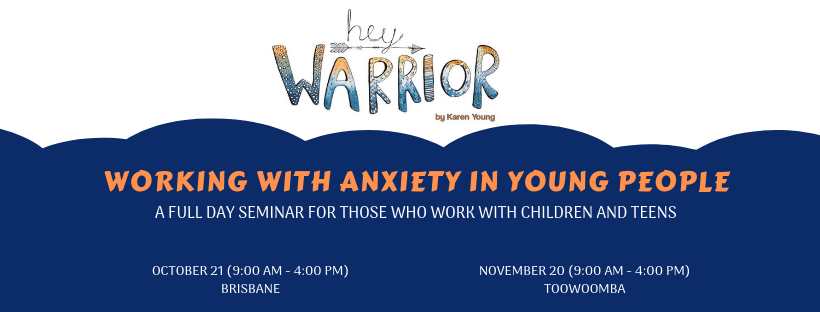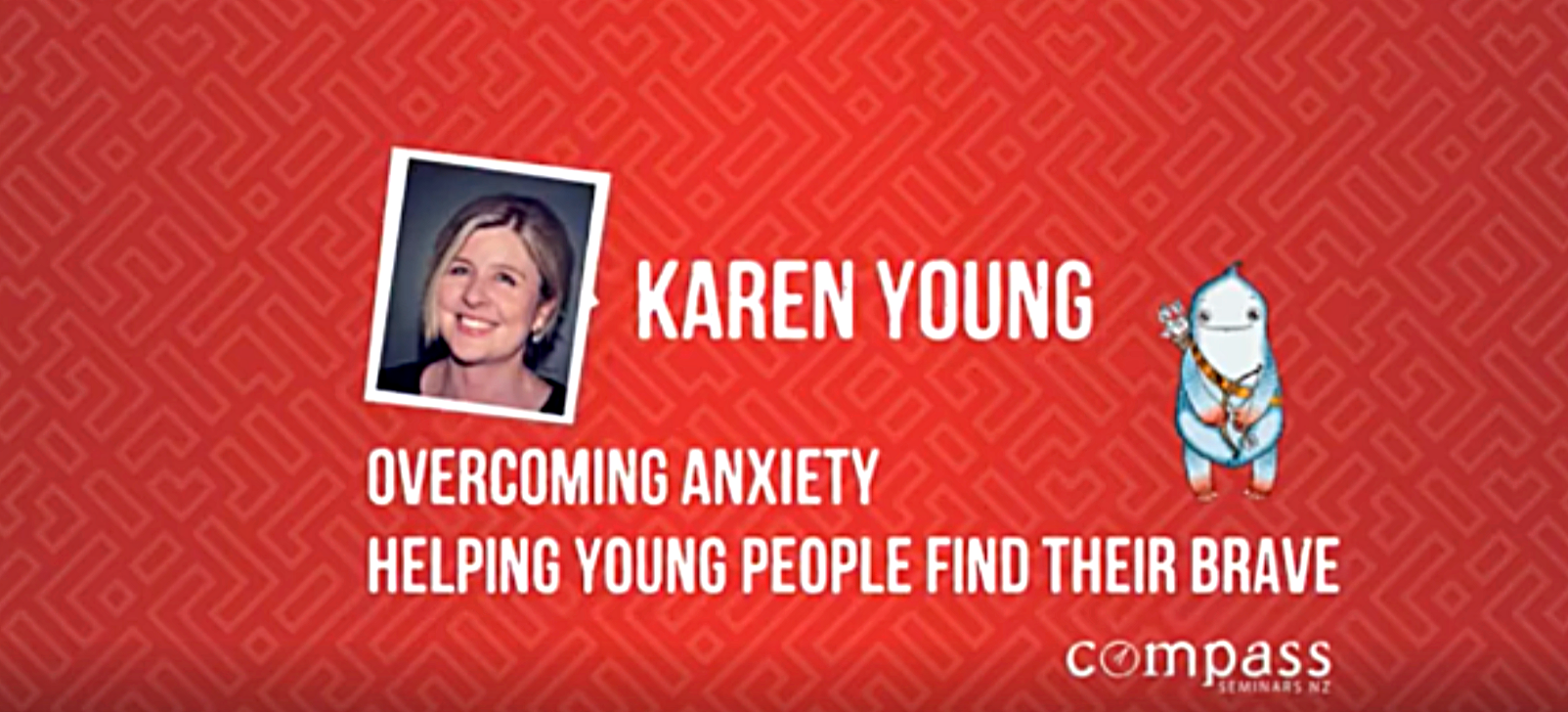Public Events
Australia – Various Locations (More dates and cities to come)

Building Brave – For anyone who lives with or works with kids or teens.
- Wellington Point, Brisbane – Wednesday 11 September, 6:30pm-8:30pm (Tickets here)
- Bray Park, Brisbane – Thursday 12 September, 6:30pm-8:30pm (Tickets here)
- Rochedale, Brisbane – Tuesday 22 October, 6:30pm-8:30pm (Tickets here)
- Toowong, Brisbane – Wednesday 23 October, 6:30pm-8:30pm (Tickets here)
What could our children do if they truly believed they were brave? In this transformational, heartfelt event, Karen Young and Michelle Mitchell come together to equip parents, carers and professionals with powerful strategies to help children and teens build resilience, thrive through anxiety and reach their potential. We will explore:
- the powerful role that caring adults play in building brave;
- a new way of understanding the role of anxiety and resilience in your child’s life;
- the often unrecognised and different ways anxiety can manifest in children;
- the impact of anxiety on friendships and school work;
- proven, practical ways to respond to anxiety and make way for calm and courage;
- how to build social resilience and equip them for the challenges of life;
- how to strengthen your connection and influence.
You know your child is capable of greatness. With some very specific strategies and solid information, we can make sure they know it too.
If you would like BUILDING BRAVE to come to your school or community, please let us know. We will be touring nationally with this new project.
Australia – Brisbane and Toowoomba (More dates to come)

Working with Anxiety in Kids and Teens (For anyone who works with young people)
- Brisbane – Monday 21 October 2019, 9am-4pm (Details here)
- Toowoomba – Wednesday 20 Nov 2019, 9am-4pm (Details here)
For as many as one in five young lives, anxiety is an intrusive part of everyday life. The effects of anxiety can steal into families, classrooms and friendships. They can undermine the way children see themselves and shrink their world – but it doesn’t have to be this way. Anxiety is very manageable when it is recognised and properly managed. With the right support, children can be empowered with the skills and knowledge to manage anxiety and move forward with courage and resilience. This dynamic workshop will help participants to recognise anxiety disorders in children and adolescents (5 – 18yr olds). It will delve into the obvious and not so obvious signs of anxiety, discuss where they come from and why they exist, and offer a range of practical, powerful interventions to assist participants to respond effectively within their own professional context.
New Zealand – Various Locations

Overcoming Anxiety – Working with Children & Young People Find Their Brave (For anyone who works with young people)
- Invercargill on 26 November 2019, 9am-3pm (Details here)
- Dunedin on 27 November 2019, 9am-3pm (Details here)
- Christchurch on 28 November 2019, 9am-3pm (Details here)
- Nelson on 29 November 2019, 9am-3pm (Details here)
- Napier on 31 March 2020, 9am-3pm (Details here)
- Hamilton on 1 April 2020, 9am-3pm (Details here)
- Tauranga on 2 April 2020, 9am-3pm (Details here)
Anxiety disorders are the most common child and adolescent mental health concern. Anxiety is a very normal human response, but for as many as 1 in 5 young people the symptoms become so intrusive so as to interfere with day to day living. Anxiety can potentially undermine the way children see themselves, the world and their important place in it – but it doesn’t have to be this way. When recognised and properly managed, anxiety is very treatable. This transformational workshop will help participants to recognise the symptoms of anxiety, distinguish anxiety from other similarly presenting conditions, and provide a powerful scaffold for understanding, explaining and working with anxiety in children and adolescents. This scaffold will then be used to present participants with powerful, practical, research-driven interventions to strengthen young people against anxiety and build courage and resilience.

